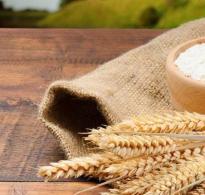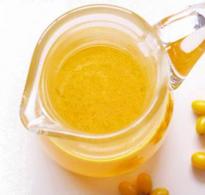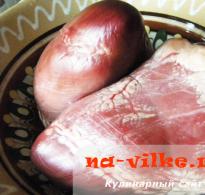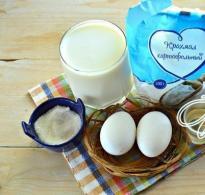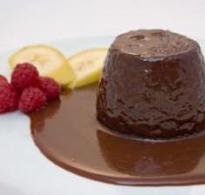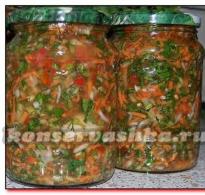How to distinguish pure honey from fake. How to distinguish real honey from fake
At the end of summer, the markets are flooded with golden jars of honey in every possible flavor and color. If you intend to thoroughly buy healing delicacy at the fair, arm yourself with a few rules the right choice. What excellent honey should be like and how to distinguish it from counterfeit, said Professor of the Department of Beekeeping named after. V. A. Nestervodsky National University of Bioresources and Environmental Management Viktor Polishchuk and beekeeper from the Kyiv region Vladimir Lozovoy.
The fact that in Ukraine there is an extremely wide assortment, while many countries produce only 1-2 varieties is a fact established by experts; you will not find imported loose ones in the markets. But you can add some water to it, replace the product of processing nectar and honeydew with ordinary sugar syrup, sell 2-3-year-old honey, which has been melted many times and is already devoid of any benefit. Today there are plenty of apiaries and honey reserves, competition in the market is high and a normal beekeeper strives to satisfy the buyer, and not to sell the goods at any cost, but there is no guarantee that you will come across a producer personally, and also a conscientious one. A self-respecting beekeeper will never mix the remains of honeycombs and dead bees into honey, supposedly to prove that the honey is natural, but will let the buyer smell and even taste it. By the way, buckwheat honey is becoming almost a rarity - it is now more profitable for farmers to deal not with buckwheat, but with seeds for oil, so the sunflower variety is “in trend”.
Signs of naturalness
Visually. The best honey is so thick that when poured from jar to jar, it literally forms a pagoda-like mound that takes time to spread out. This is because it contains no more than 17-20% water, and this is the consistency of syrup, which contains 4 cups of sugar and 1 cup of liquid. Whether honey is diluted with water can be determined by weight: a kilogram of honey is placed in a container with a volume of 0.8 liters, and liter jar normal honey weighs almost one and a half kg. A conscientious seller at the market will allow you to check the consistency of the product with a stick or spoon: if the honey stretches like a thin thread, it is of high quality, while adulterated honey drips from the spoon and is instantly drowned in the mass. In appearance, it will not be uniform and transparent, like natural, but rather cloudy, with sediment at the bottom or stratified (often semolina and molasses are placed on the bottom, and honey is only placed on top). Foam is also a bad sign; the honey is either unripe or fermented.
Getty Images
Touch and taste. Good honey always slightly irritates the throat with its astringency, and the sourness is not felt (it is a sign of an unripe or spoiled product). A drop of normal honey, rubbed with your fingers, is easily applied and absorbed into the skin, but honey containing additives is simply rolled into rolling pins. U good honey There is always a strong, specific aroma, often floral or pollen, but the bad smell is less, the more syrup is mixed into it.
Solid or liquid. The more in honey useful substances, the faster it will harden. , remember that in the summer it should only be syrupy if pumped out this season, and only the rapeseed variety from the spring honey plant thickens very quickly and, extracted in the spring, will already be in bars by August (liquid - barely yellow, crystallized - almost white). And when going to the market in autumn or winter, consider only candied honey - at this time there is no other normal product (there is also an exception: the acacia variety, which stores its liquid form for a long time). A decent beekeeper will have liquid honey in winter, but will not sell thickened honey in summer: in the first case, it will most likely be melted (and you can only heat it carefully, at a temperature no higher than 37°, otherwise everything will beneficial properties down the drain), in the second - unmelted, but also last year.
 Getty Images
Getty Images
Home check. Just in case, do not immediately purchase a three-liter jar from an unverified outlet, but take a mayonnaise jar for testing and experimentation. You can arrange a honey check a simple piece bread Dip it into the purchase for 10-12 minutes - if it softens, it means you bought banal syrup, and in natural honey the bread will harden. Honey diluted with water will form liquid stains on a sheet of paper or will leak, but good product will remain unchanged. If you poke the honey with the hot tip of a knife, nothing will remain on the metal, while counterfeit honey will leave a layer of burnt sugar (as when making homemade candy). Dilute a teaspoon of honey in half a glass of hot water: low-quality honey will not dissolve completely, and if you pour a little alcohol into the resulting liquid, it will also become cloudy. A solution of real honey after all these manipulations remains transparent, like a tear, and will fail only if it is honeydew from coniferous trees. By the way, all additives will float or settle if you take the distillate for testing. You can also drop iodine into the same mixture, and if the seller mixed starch, it will turn blue. And when you add vinegar, bubbles may appear: clear signs that there is chalk in the honey. The last method is to sprinkle a drop of honey with a pinch of starch. Ideally, the white powder will remain a separate layer, but artificially mixed honey will certainly react with it in some way.
According to the documents. Laboratory tests will quickly find any impurities and excess water in honey, so it would be a good idea to ask the seller for the apiary’s veterinary and sanitary passport and a certificate of conformity (expert conclusion). If it is there, it means that the product passed the test without problems, because the control will easily show even an excess of sucrose content by even just 5 percent. The document must have a laboratory seal and a mark indicating that it has passed radiological control. And make sure that the certificate is accompanied by a receipt for payment for the research and with a date that coincides with that indicated in the expert conclusion.
Tatiana Malinovskaya
Here we want to talk about how to determine real honey and distinguish it from a fake. To choose from in this case You should approach it very responsibly, as a low-quality product can cause significant damage to health. To avoid unpleasant consequences, we recommend that you adhere to the following rules when purchasing.
How to choose honey
When buying honey, you should pay attention to its color, consistency, smell, taste and weight.
According to the color of honey
If it is not important to you what type of honey to buy, then you should not pay attention to its color. If you want to purchase certain type, then you should familiarize yourself with the type of product and their features.
- Acacia honey has a light yellow tint.
- Mountain honey is found in yellow to light brown color. Has a fruity taste.
- Buckwheat is usually dark. This variety Characterized by a sharp and spicy aroma and taste.
- Clover light, transparent. Its difference is its snowy aroma and unique taste.
- Forb honey is found in golden yellow and yellow-brown colors.
- Sunflower has a light amber hue and a tart taste.
- Linden, slightly yellow in color.

Consistency of honey
Unscrupulous sellers often add various impurities to honey. For example, to increase its quantity, starch is added to the container, sugar syrup, flour, chalk. Their presence can be determined by the consistency of the mass. If the honey at the bottom of the container seems denser and liquid on the surface, then this is a sure sign of a fake.
Besides this, no natural honey foams. Foam on its surface indicates the fermentation process, which occurs when the volume of water in the product is more than 20%.
Natural product will be heterogeneous, it should contain particles of wax and pollen.
Once collected in liquid form, honey lasts for about 1 month, then it thickens and crystallizes. As a rule, it is collected from mid-July to the end of September. Therefore, you should not trust liquid products on store shelves in late autumn, winter and spring. This product is a fake.
By the smell of honey. Before you buy honey, smell it. Natural products have a characteristic aroma. If you did not smell any odor, then the honey was obtained artificially.
To taste honey. Each type of honey has a characteristic taste, as discussed above. Natural honey often burns the throat and quickly melts in the mouth. Counterfeit or reheated products often taste like caramel. After consumption, insoluble particles may remain.
By weight of honey. Remember that a liter jar of real honey will weigh at least 1400 g (buckwheat - 1300 g). 1 liter of bad product weighs less than 1400 g.

How to determine the quality of honey
To buy real honey, in addition to assessing its physical properties, it is recommended to resort to the following tricks.
1. Rub honey between your fingers. The natural product will be completely absorbed into the skin, the fake product will remain in the form of grains - your fingers will become sticky.
2. Drop honey onto a piece of paper. The high-quality one will remain in a dense drop, while the fake one will spread over its surface, leaving a wet spot.
3. Scoop honey with a spoon. On worthwhile product will descend in a continuous thread and be “laid” in layers, and last straw pulls itself back towards the spoon. The fake one will splash.
Honey - unique product. It strengthens the body and cures diseases. But the benefits can only be obtained from natural and quality product. Therefore, try to buy it from trusted sellers. Also important point is the container in which it is sold. Always give your preference to a glass or wooden container.
Do you like honey? What is important to you when purchasing it?
It is not difficult to buy high-quality natural honey if you know how to choose it. Avoid buying fake bee product you can by mastering a few tricks. Read about ways to distinguish real honey from fake and what methods to use for this.
Any buyer should be able to recognize real honey and be able to distinguish it from a fake. Sometimes it happens that focusing only on appearance at the bank, a person buys a product, and when he comes home, for a long time doesn't notice the change. Natural bee elixir must meet several mandatory points. Which one, see below:
- First of all, you need to determine whether there is a persistent odor. The aroma wafting from the jar will always tell you whether the product in front of you is real or fake. Honey that does not contain syrups, that has not been boiled or mixed with various additives, smells like honeycomb from a beehive - wax, nectar, pollen, sweetness, directly honey.
- Natural sweetness is stored for a very long time without changing its taste, while counterfeit goods almost always spoil, either begin to ferment, or separate and acquire an unsightly forked texture.
- The consistency of liquid bee gold is always quite thick, even if the mass is collected recently. A texture that is too runny indicates that the substance was diluted or collected too early.
- The present state is tasty and does not spoil after crystallization. Thicken various varieties can be different, it all depends on the storage conditions. The crystals can be either very small or quite large. But there should not be too large sugar “snowflakes” in the bee mass.
- The weight of mature honey is at least 1.4 kilograms per liter.

How not to confuse it with a fake?
So, how can you tell if you are looking at a counterfeit product? Notice how the honey lies in the jar. This product should not delaminate. The homogeneity of the mass without sediment and foam, uniform color and the absence of large bubbles inside the jar indicate that the honey was stored under the right conditions.
Don't be afraid to taste or even rub the mixture between your fingers. The real delicacy sticks well and forms an adhesive film, but the fake one leaves a feeling of excess moisture.

Honey should not splash when falling from a whisk or spoon. It is easy to distinguish a watery substance from a fake - drop a small drop on a napkin. If a wet mark has formed next to the stain, the mass is clearly diluted. A drop of real delicacy will keep its shape for a long time. This method is good for home use.
When you taste honey, scoop it with a spoon or a special whisk from the very bottom of the jar or other container in which it is poured. This way you can find out if there is a candied layer at the bottom (if the container is opaque). If the bottom is thick and the top is liquid, perhaps this is not a fake, but a mixture of several varieties.

It’s also not worth taking such a product, since mixing old, more mature and fresh honey may lead to poor taste. Thus, in order to distinguish a good product from a counterfeit one, ordinary observation will also be required.
If you cannot distinguish a fake from the original on your own, use the advice of experienced beekeepers.

Video “Distinguishing a real product from a fake”
Expert advice on how to distinguish natural honey without buying counterfeit. These recommendations and secrets will help you buy a truly worthwhile product, the taste of which has no equal!
Fake honey has been on sale very often lately. And it doesn’t matter whether you buy it in a store or from a beekeeper. For the sake of money, many are ready to resort to meanness and even sacrifice the health of other people.
When creating counterfeit honey, various components of dubious quality are used. But those who really care about themselves and their loved ones should know how to choose the right honey. We are happy to help you. Here are some ways to spot fake honey. Choose the one that suits you!
How to distinguish natural honey from fake
- Real honey, in addition to its sweet taste, should be slightly bitter and cause a sore throat. When buying honey at the market, be sure to try it.
- Be sure to smell the honey. It should have a delicate floral scent. The fake one often has no smell, or, on the contrary, it is too bright and intrusive.
- Color is not the last thing you need to pay attention to. Unnaturally light honey is produced when bees are fed sugar syrup or molasses. Such a product will not benefit the body.
How to recognize unnatural honey at home
- If the honey is natural and mature, then scooping it up with a spoon and swirling it, it will be wound in layers with a ribbon. And if it drips from a spoon, then you shouldn’t take it.
- Dissolve a tablespoon of honey in a glass of water. The water will become cloudy, but without sediment. In the presence of impurities, a precipitate always forms.
- To determine whether there is flour and starch in the product, add a drop of iodine to honey diluted with water. If the solution turns blue, then these additives are present.
- You can add a little vinegar essence. If the honey sizzles, it means there is chalk in it.
- Place a drop of honey on the tip of a match and light it. If the honey ignites, it means it is natural.
Everyone should know how to distinguish natural honey from counterfeit honey. After all, this product is used not only to add flavor to dishes and drinks, but also to boost immunity.
With pain in my soul I have to admit that recently counterfeit, adulterated honey.
There are people who are ready to do any meanness for the sake of money. They use honey of unknown origin and questionable quality. After all, even with the help of bees you can make adulterated honey. For example, give it to bees and they will process it into honey
It will be delicious honey, but it will not have that vital energy that goes through the bee from the flower to the person. The only advantage of this honey is that it is easily absorbed by our gastrointestinal tract.
Let me give you another example: in hot water sugar dissolves, and for “smell” a little honey is added and sold. In one of the articles I read that some “craftsmen” add a drop of rose oil to sugar syrup, throw in pieces of honeycomb, dead bees, infuse, filter, and package.
Moreover, these cunning people throw out such a surrogate at a time when it is already on sale. It is also liquid immediately after pumping, and a gullible buyer will not always immediately understand the deception.
If the honey is natural and mature, then by scooping it up with a spoon and swirling it, the honey will be wound onto the spoon with a ribbon in layers. And when it drips from a spoon like jelly, it’s a fake.
In winter, honey cannot be liquid. Liquid honey in winter it is heated honey, and this is evidenced by the smell of candy or burnt sugar. This honey is clearly overheated and is dangerous to eat. After all, at temperatures of 45-50ºС and above, carcinogenic substances appear in honey. And healing enzymes and vitamins disappear completely. Even drinking tea with high-quality natural honey is better as a “bite”, since in a hot drink the healing properties of this honey are lost.
With the help of simple tests you can determine whether you got a fake. Dissolve a spoonful of honey in a glass of water. The solution should be slightly cloudy, but without sediment. In the presence of impurities, a precipitate always forms.
Flour and starch are “calculated” by adding a drop of iodine to a small amount of honey diluted with water. If the solution turns blue, there is flour or starch in the honey. If, instead of iodine, you add a little vinegar essence to a solution of water and honey, and the solution hisses, then there is chalk in the honey. Unnaturally light honey is produced when bees are fed sugar syrup or molasses. All these are 100% cases of honey falsification.
A few years ago, gypsies walked through our village. I was sitting on a bench near the house. Trade women came up to me and offered me honey in glass bottles at a reasonable price. three-liter jars. The price of honey is much lower than in our area. Honey is liquid. And imagine my surprise when I was offered to taste the quality of honey right through the edge of the jar. How can you be so careless about the priceless gift of nature!?
The person selling natural honey knows its value and will give it to you to try with a small spoon, carefully and leisurely. Moreover, those who sell “correct” honey never run around villages, there is no end to buyers, and they have no time to run. I don’t need to explain to you that the gypsy women’s honey was fake.
Let me give you another example. A beekeeper I know told me that in the summer beekeepers from afar come to their village to roam in KAMAZ trucks. Bees fly to flowers, carry nectar, and next to the hives whole bags of dry sugar are poured onto cellophane and there are drinking bowls with grape juice and water. These beekeepers do not have time to pump honey. But this is not natural honey, but fake honey, although it is no longer sugar syrup. This is an obvious pursuit of money, falsification.
I believe that the beekeeper and seller should have high responsibility for the quality of honey. Intermediaries are not interested in quality, the main thing for them is to buy more, pay less, and then sell fake honey more expensive and get a lot of income.

